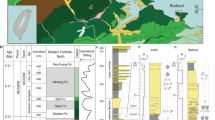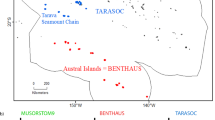Abstract
IN the early months of 1951, Sir John Graham Kerr collected some three hundred Murex tribulus shells on the western shore of the Great Bitter Lake south of the village of Fayid. It will be remembered that the entire animal population has been introduced subsequent to the cutting of the Suez Canal in 1869, which opened the way for immigrant organisms from the Red Sea. Now, granted the inherent tendency of living creatures to vary when relieved of the shackles of environment, Sir John argued that, in their new environment of the Bitter Lakes, these Murex specimens had had an opportunity of responding to this tendency, and hence the remarkable variety of sculpture in the random collection. Moreover, this variation exhibited in spines and tubercles is not a matter of mere superficial markings, but rather of deep-seated causes such as the localized growth of the mantle edge or the depth in the mud occupied by the individual animal. The shells were in perfect condition, there being practically no tides in the Bitter Lakes and no violent wave action, and the bottom is soft mud.
This is a preview of subscription content, access via your institution
Access options
Subscribe to this journal
Receive 51 print issues and online access
$199.00 per year
only $3.90 per issue
Buy this article
- Purchase on Springer Link
- Instant access to full article PDF
Prices may be subject to local taxes which are calculated during checkout
Similar content being viewed by others
Author information
Authors and Affiliations
Rights and permissions
About this article
Cite this article
TAYLOR, M. Murex from the Red Sea. Nature 171, 756 (1953). https://doi.org/10.1038/171756b0
Published:
Issue Date:
DOI: https://doi.org/10.1038/171756b0
This article is cited by
Comments
By submitting a comment you agree to abide by our Terms and Community Guidelines. If you find something abusive or that does not comply with our terms or guidelines please flag it as inappropriate.



